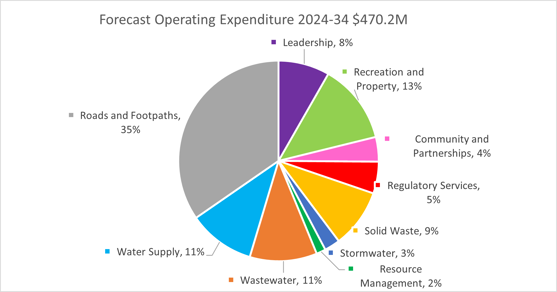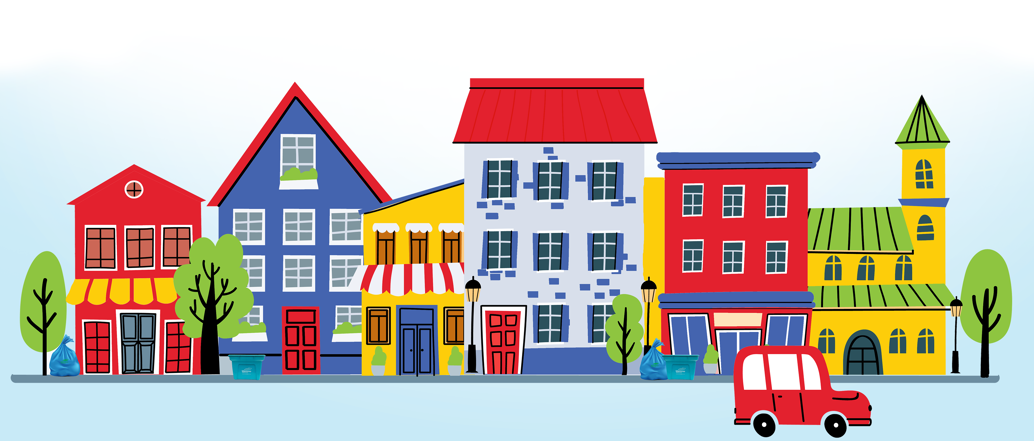LTP2024-2034
This consultation has now closed


Our Council has carefully considered what we need to do in the next 10 years to improve the wellbeing of our district and build resilience for the future.
These proposals have been outlined in our Consultation Document for the draft Long Term Plan 2024-2034 (LTP).
How we pay for these will be through a combination of rates, fees and charges, subsidies, loans, and reserves. This allows us to spread the cost over time to reduce the impact on rates.
Like all councils and households, we are facing increasing costs just to maintain where we are. This includes the cost of consumables, contracted services, interest costs on loans, etc, and is reflected in the current inflation level of 5.2% in New Zealand. Some costs have increased much more than 5%, such as roading for example.
We are faced with a number of challenges that we need to address. Your feedback will help us decide how to approach these over the next 10 years. We must consider the affordability in each case versus the best outcomes for our district. Our preferred options indicate where we see this being achieved.
Our LTP includes the 3 Waters activities for the 10 years of the LTP. We will carefully consider the options once presented to us by Central Government and what will be the best outcome for our district.
Roading is our largest budget and costs continue to increase. We will need to invest more to maintain our roads at the current level so with a limited budget levels of service may reduce.

--

Our Vision: Te hanga tahi o tatou Takiwa - Shaping our District together
This draft LTP maps out how we will shape our future, and how we can all work together for the benefit of our district.
---

Proposal: Funding the future of our Rural Halls
There are 13 rural halls across the district, owned either by Council, the Crown, or community groups. Our rural halls are aging and require considerable investment to maintain. The use of rural halls varies between halls with some having regular use and others having much lower use. Council, in consultation with each hall committee, needs to consider if there is community benefit that warrants significant ratepayer investment.
Proposal: Te Kūiti flooding remedies
Our district has experienced a number of severe weather events in the last three years that have had considerable impact on our community. These types of weather systems are likely to continue to occur so we must decide what investment we should make in our stormwater network to reduce the impact on residents and businesses in the future.
Proposal: Elder persons housing
WDC provides 20 elder persons housing units in Te Kūiti as “affordable housing”. Rent is significantly lower than the market rate for similar properties and Council subsidises the cost of providing this service. We are looking at ways we can best manage our rental properties, whether it’s increasing rent or exploring other options.
Proposal: Update the Stormwater Rating Area
A recent review of the Te Kūiti Urban Rating area showed that it doesn’t accurately reflect the location of the stormwater infrastructure. Some property owners who benefit from the network are not contributing to its operation or maintenance.
Proposal: Introduce a targeted or differential rate on the District Roading Rate
Forestry vehicles cause damage to local roads as they transport logs across the district, however, forestry properties do not pay for this additional damage in their rates. We are proposing to introduce a targeted or differential rate on the District Roading Rate to recover some of the costs of repairing roads damaged by forestry vehicles.
Proposal: Simplify the rates structure
Currently Council has general activities which generate districtwide benefit but are not split uniformly between General Rate and the Uniform Annual General Charge (UAGC). A simpler and more transparent approach is to add all General Rate and UAGC rated activity costs together and then determine the level of the UAGC.


Impact of retaining 3 Waters
Now that we know we will continue to deliver 3 Waters services, we need to evaluate what are the 'must do' projects for each community to continue to receive the level of service expected while balancing affordability. For our LTP we must now include a full 10-year budget and programme of works to continue to deliver this service to our communities.
One historical issue that needs addressing is the build-up of sludge (solid component from sewage) in our Te Kūiti wastewater treatment ponds. It has reached a level where we can no longer just chip away over time without putting at risk the environment and our ability to treat the wastewater efficiently.
Our other historical issue is the aging pipe network across all of the 3 Water networks but especially drinking water. We have assessed the networks and have a programme of works that addresses the most critical replacements for each network. Without these replacements we risk pipe bursts and disruption to services for residents and businesses.
--
Landfill and sludge removal
Having a landfill in our district has been beneficial to the community and provided a site with good access and environmentally responsible waste disposal options. To continue to operate the landfill we must make some significant investment.
Our Te Kūiti wastewater treatment ponds which collect the solid component left after wastewater is treated (sludge) have nearly reached capacity. Significant volumes of sludge now need to be removed, the most common disposal method is to mix with municipal waste and dispose of into a landfill.
Due to limited disposal options for this type of product and transport costs involved, the most likely disposal options are transport to another out of district landfill or processing site, onsite solutions involving civil works in the existing ponds, disposal at the landfill, some form of other land disposal or a combination of these. We are currently working through the complex process of evaluating all the disposal options for the sludge removal.
The current cell (lined hole for waste disposal) at the landfill is nearly full. We have budgeted to develop the next cell. However with the changes in waste volumes and costs, risk and safety concerns
we need to decide if this is the right next step for our community.
If a cost effective and appropriate disposal solution for the wastewater sludge is found that does not involve the landfill, Council might need to consider the viability of running the landfill.
If Council considers that the development of the next cell in the landfill is not the best option, then we will engage with the community again with the options available.
---

Council looks after about $678 million worth of infrastructure, assets and facilities. That includes our Wastewater, Stormwater, Water Supply and Roading networks, right down to the pipes we use.
We also undertake the massive task of managing, regulating and monitoring all the activities that contribute to where and how you live, work and play in our district. That includes things like toilets, playgrounds, dog control, community halls, libraries, swimming pool and more.
We estimate it will cost around $619 million over the next 10 years to look after what we already have and to provide the services necessary for our district.



Supporting Documents
- Fees and Charges - Statement of Proposal and Schedule
- Draft Financial Strategy 2024-2034 (PDF 752 KB)
- Draft Revenue and Financing Policy (PDF 1.51 MB)
- Draft Infrastructure Strategy 2024-2054 (PDF 2.8 MB)
- Draft Treasury Policy 2024 (PDF 331 KB)
- Draft Significance and Engagement Policy 2024 (PDF 457 KB)
- Draft Accounting Policies 2024-2034 (PDF 243 KB)
- Draft Policy on Appointment of Directors to Council Controlled Organisations (PDF 194 KB)
- Draft Significant Forecasting Assumptions 2024-2034 (PDF 758 KB)
- Draft Performance Measures 2024-2034 (PDF 403 KB)
- Draft Financial Statements (PDF 697 KB)
- Draft Funding Impact Statement and Rates Examples (PDF 1.51 MB)
- Draft Financial Reporting and Prudence Benchmarks (PDF 123 KB)

